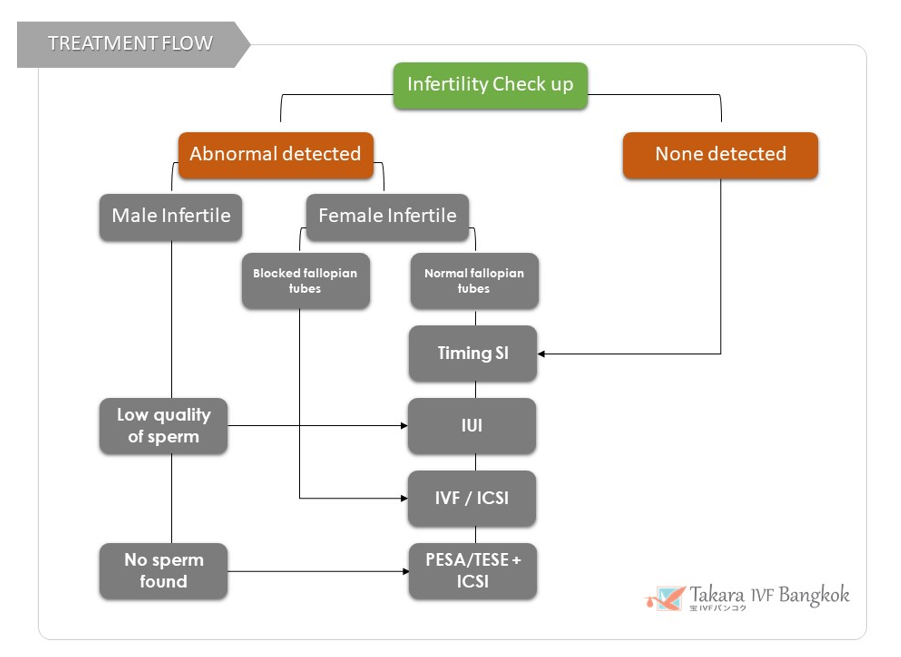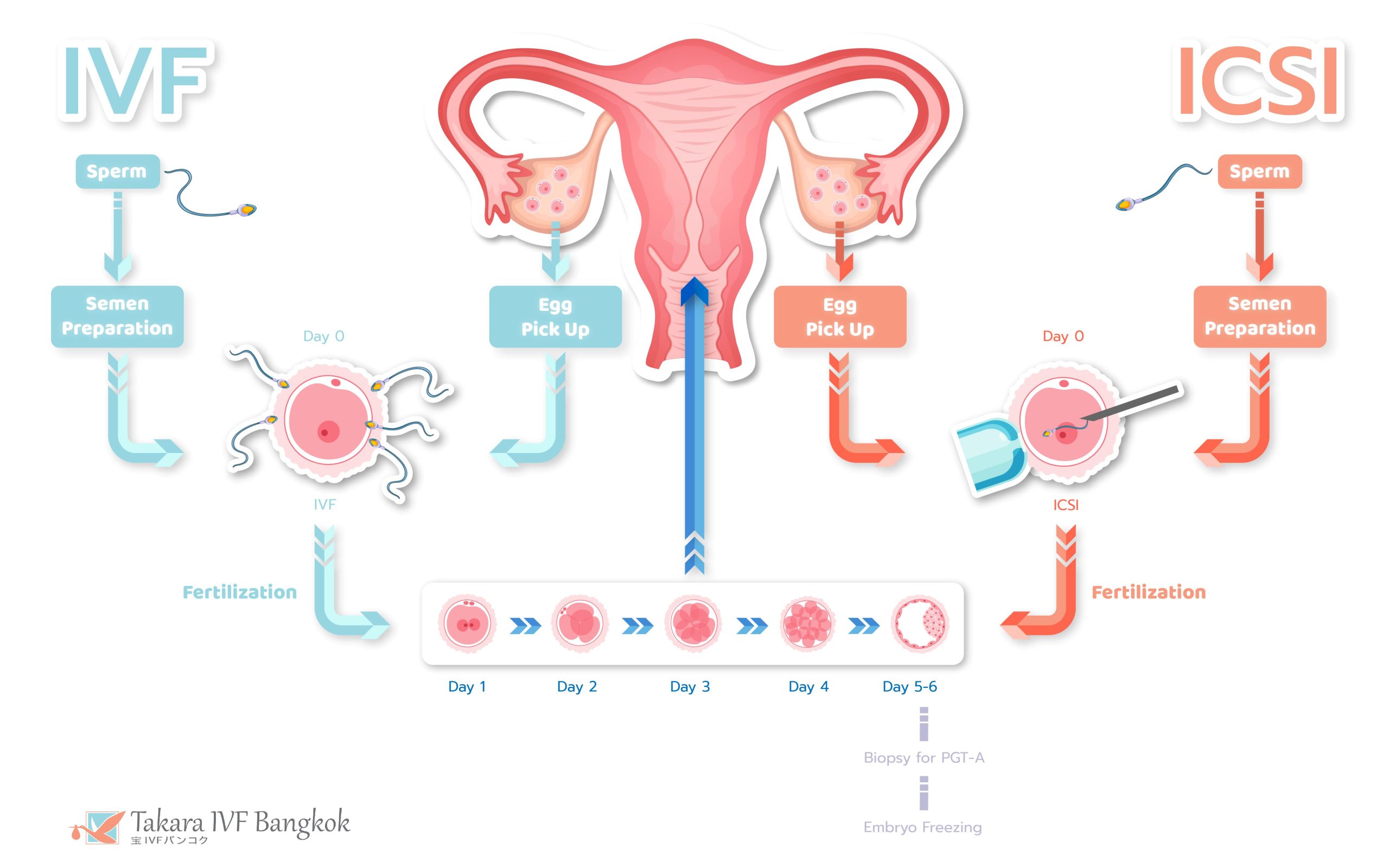FERTILITY TREATMENT
- Home
- Fertility Treatment

Timing SI
- Timing SI in natural cycle:
- Timing SI in stimulation cycle:
Intrauterine insemination (IUI)
- IUI procedure in natural cycle
- Inform the clinic on 1st day of period.
- Perform the ultrasound scan to observe follicle size on 12th-13th day of the period.
- Trigger ovulation and schedule IUI.
- IUI procedure in stimulation cycle
- Inform the clinic on 1st day of period.
- Start taking egg stimulation medicine on 2nd-3rd of the period
- Perform the ultrasound scan to observe the follicle size on 12th-13th day of the period
- Trigger ovulation and schedule IUI.
- The treatment shows success rate around 10%-15% in each treatment cycle.
In Vitro Fertilization (IVF/ICSI)
In Vitro Fertilization or commonly called IVF which means fertilization outside the body is UpToDate innovation on assist reproductive technology which shows successful pregnancy rate about 30%-40%, the highest success rate if compare to other treatment. However, the success rate can be varied by many factors such as age, embryo quality etc.
The treatment starts from using injection every day for 8-10 days to stimulate the ovary to produce multiple eggs. The eggs are then collected and fertilized with the prepared sperm under proper environmental controlled conditions in the laboratory. The fertilized eggs develop into embryo and continue incubated for 5-6 days until reach the blastocyst stage of embryo. Then the embryo is will be transferred into uterus or frozen.
The difference between IVF and ICSI
The difference between IVF and ICSI is in the method of fertilization. IVF fertilization methods are closely natural fertilization which a sperm get into an egg and fertilized itself. The embryologist will release prepared sperm around the egg, only the strongest sperm can get into an egg for fertilization.
For ICSI (Intracytoplasmic Sperm Injection, selected healthy sperm only 1 sperm and injected into 1 egg by specialized equipment under a microscope for achieve fertilization. The ICSI method can increase the fertilization rate and reduce abnormal fertilization problems.
IVF treatment with embryo chromosome screening

PESA, TESA/TESE
The severe cases of male infertility such as anejaculation, the absence of sperm on semen analysis may be due to azoospermia, congenital bilateral absence of the vas deferens, vasectomy or no viable sperm after ejaculation. To overcome severe male infertile problem there are treatment options depending on the sperm source available and patient preference such as the following:
- Percutaneous Epididymal Sperm Aspiration (PESA): This is the technique that sperm are aspirated from the epididymis through the skin
- Testicular Sperm Aspiration (TESA): This technique collects sperm from the testicle by needle aspiration
- Testicular Sperm Extraction (TESE): This is an open surgical biopsy technique to remove a few testicular tissues and extract to find the sperm.







